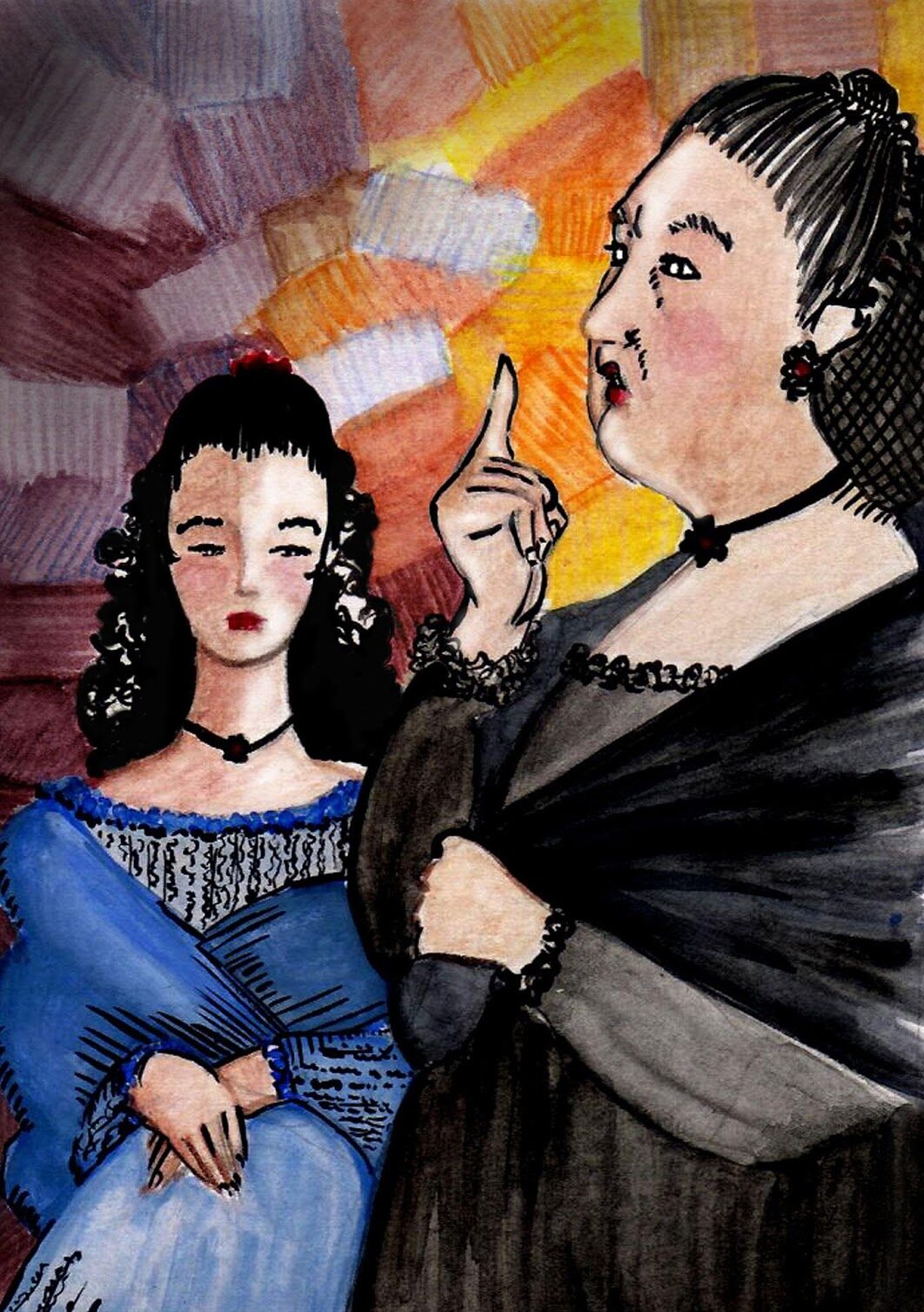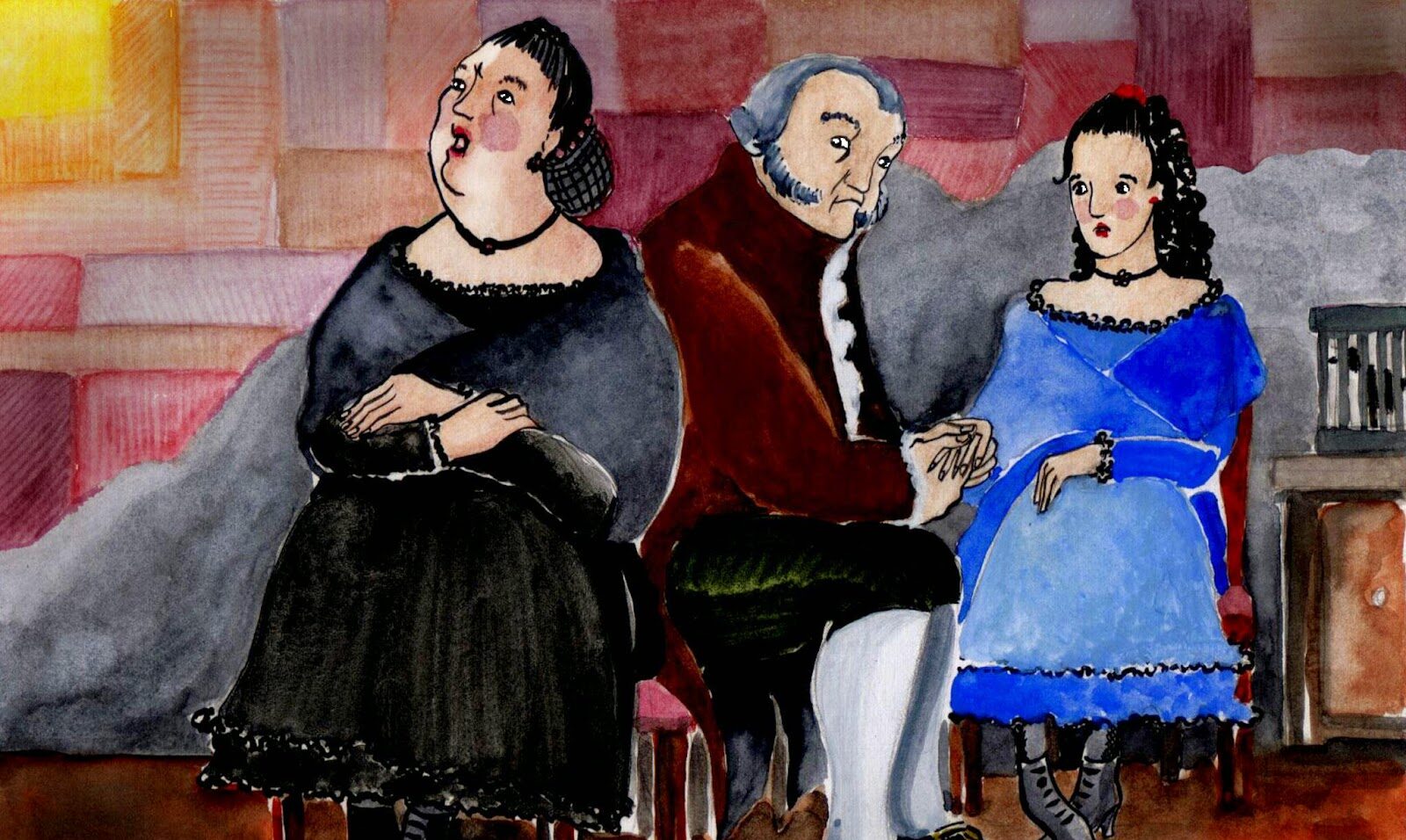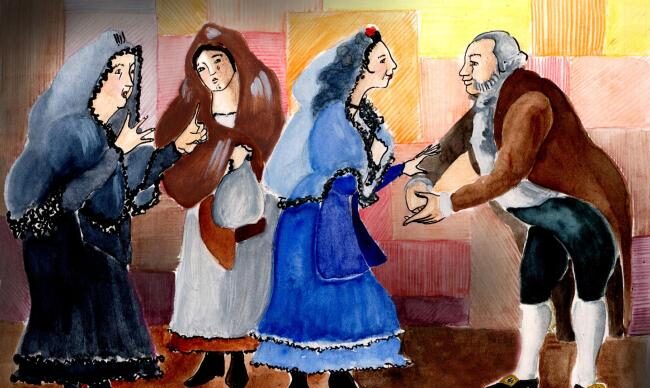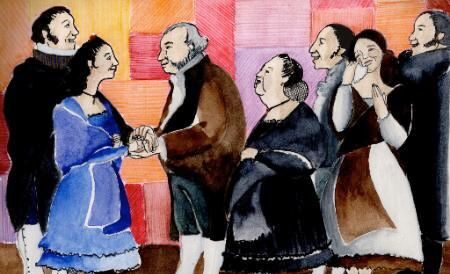The yes of the girls, is a work carried out by Leandro Fernández de Moratín. It is based on a comedy under elements of prose and consists of three acts. Despite its success, the play was banned during the Inquisition.

The yes of the girls
The girls' yes was performed for the first time at the Teatro de la Cruz in Madrid, Spain, on January 24, 1806. The play's writer was Leandro Fernández de Moratín. He was personified until reaching Lent on that date.
The work is classified under comedies in prose form and has a structure that has three acts. It is important to mention that due to its content it was banned by the Inquisition.
It could be considered that El Sí de las Niñas was one of the masterpieces orchestrated by this author, since the public of Spanish origin received it with remarkable receptivity. Even its dramatization since it was released had the opportunity to be carried out twenty-six days without rest until Lent. That, as was common at that time, the theaters had to close.
It is important to mention that, for its beginnings, El Sí de las Niñas had already begun to be represented by important comedians belonging to the Spanish provinces. In the same way, there was a group of cultured characters in Zaragoza, who sought to perform the work in private theaters.
It should be mentioned that in Madrid there were four editions, typical of El Sí de las Niñas, all of these made for the year 1806. All these representations were made because the public constantly asked for the story to be presented in theater.
The difficulties begin
The overwhelming success of El Sí de las Niñas caused influential people within the society of that time to begin to see defects that would allow it to be banned. Since then, celebrations based on elements other than religious aspects were not well seen.
It is after this that they devalued the important influence of those who develop the art of comedy. This is mainly due to the fact that elements of the errors and vices that symbolized the high society of the time were presented in the work. Demonstrating elements that were based on their own interests.
The important recession of the work meant that the critics did not have great opportunities to write negative features of the story. However, there were warnings and in turn observations based on the elements of El Sí de las Niñas. Learn a little more about literature with the article Seagull
After this, those who were determined to bend elements of the illustration, concentrating on the population living in ignorance, caused the work to be banned. Which brought with it a large sum of denunciations made in the courts of the Inquisition.
It is even important to mention that among the many who participated in this situation, a minister who had the task of directing the development of language studies stands out. He put it indicated that the author had ruined his life as a writer after making and in turn publishing The Yes of the Girls. This is because he classified him as a character who did not abide by the laws of God and therefore should receive a great punishment.
denial of evolution
All the obstacles that resulted in the prohibition of the work at the time of the Inquisition. It was nothing more than an attempt to prevent cultural evolution and progress in Spain from taking place.
Since all those who developed cultured works could bring with them the discovery of hidden truths that did not allow literature and the arts to be promoted. Leaving behind the ignorance of the people. Result that did not suit the Spanish high command.
Participants of the work
It is important to keep in mind that despite the threats, the actors who were part of this play sought to prove the story. Leaving behind the obstacles, giving the public the importance of El Sí de las Niñas.
In addition to this, it should be noted that the actors who played Doña Irene, Doña Francisca and Don Diego, carried out their work in such a way that they deserved greater recognition.
The actors who represented the aforementioned characters are María Ribera, who represented her character with total naturalness, underlining the grace of the person she was playing. Likewise, Josefa Virg performed remarkably well, as did Andrés Prieto.
All this also stands out because the author managed to get not only talented actors in his work, he also had people who had a great intellect and in turn were willing to spread the importance of culturalizing a people.
Premiere and reactions
The author of El Sí de las Niñas, Leandro Fernández de Moratín, wrote this work in 1801. It was the first work he did after La comedia nueva, El barón and La mojigata, which were released after El Sí de the girls.
The development to achieve its premiere, was somewhat late. Since he dedicated himself to executing it meticulously, in order to have the opportunity to carry out its publication in a concrete and resounding way.
It is important to keep in mind that El Sí de las Niñas began its rehearsals in the first month of 1806, at the facilities of the Teatro de la Cruz. After an exhaustive preparation, it manages to be visualized to the public for the 24th of that same month.
It should be noted that this work was not only successful thanks to the public. Post is considered the most widely accepted work of its time. Which leads it to be cataloged by experts as the greatest theatrical success of the entire century.
The work had the opportunity to be under representation without a break for twenty-six days. According to data, it had the origin of attracting around 37.000 spectators. What is remarkably outstanding, since at the time that was a quarter of the adult population in Madrid.
The author
The resounding success of the work brought with it the total abandonment of Leandro Fernández de Moratín from the scene. Emphasizing that the only writings that the author participated in after El Sí de las Niñas were the adaptations of some works by the French Moliere called La Escuela de los Husdos and El Médico a Palos.
Despite the actions taken by Fernández de Moratín, El Sí de las Niñas still provoked feelings of hatred, offset by others of frenzy. This is because the work has elements that offer its viewers the importance of illustration. It also highlights that the authorities should begin to act under rationalist aspects. All in search of the development of a better society.
It is important to mention that by 1815, after the restoration of King Ferdinand VII's power, the Inquisition also managed to ban La Mojigata, because according to their criteria it had inappropriate elements.
It should be mentioned that the prohibition of the works of Fernández de Moratín was renewed in 1823. After this, the Spanish public did not have the opportunity to witness the author's masterpieces for twenty years.
After the lifting of the ban on his works, it was released again in 1838. However, it underwent modifications as a result of the censorship of the time.
Summary of El Sí de las Niñas
The story begins with the character of Doña Francisca, who is a girl who is 16 years old at the beginning of the work and 17 at the end. Among the features of the girl, it stands out that she was educated in a convent and in addition to that, she is compromised in marriage with Don Diego, who is 59 years old.
The commitment is carried out, after the wish of her mother Doña Irene, that her daughter marry a good match. However, the problem of the story is generated, because despite the wishes of Doña Irina, Doña Francisca, she is totally in love with a soldier named Don Carlos.
After this love situation, Doña Francisca's domestic, who is called Rita, decides to help her employer. She, well, wants to see her happy with Don Carlos. Which leads them to perform various actions that result in the annulment of the marriage.
It is important to mention that despite not wanting it Doña Francisca feels obliged to be with Don Diego, since she does not want to disobey the demands of her beloved mother Doña Irene.
The beauty of this work is that at the end, true love triumphs over all things. Leaving aside, any aspect outside of the true feelings.
Story Features
The yes of the girls stands out because it was carried out by an author who tended to work under the elements of the Enlightenment, therefore the characteristics of the story focus on these beliefs.
Those who considered themselves Enlightenment thinkers did not agree with marriages of convenience. With greater repudiation those carried out between young girls with older men. The main elements that made them object to this situation were in relation to the moral elements. These commitments were totally removed from love. Which must be the primordial feeling to execute a couple's union.
Another important aspect is that many times these unions do not collaborate with demographic growth. This is because in most cases, they do not have offspring due to the advanced age of the man. The theme is exemplified in Doña Irene, who married older men and had 22 children but only one was strong enough to survive.
Background
Characters such as André Vézinet, considered that Fernández de Moeatín was inspired by Moliere's work L'ecole des femmes. However, José Francisco Gatti was the one who discovered that the inspiration for the author of El Sí de las Niñas was L`ecole des méres de Marivaux.
Similarly, it was compared to the one made by Ramón de la Cruz called El viejo Burlado. However, despite its inspirations, El Sí de las Niñas is completely original.
Characters
This story does not have a large number of characters, given the situation and in turn the period in which it happens is very small. The characters are the following:
Don Carlos
This character is the nephew of Don Diego. He stands out for traits such as his courage with which he performs in battle and his shyness in the face of his uncle's demands. In addition to this, he considers himself a man with great passion and courage, capable of fighting for love.
It is important to mention that Doña Francisca, at the beginning knows him as Don Félix, since in their first meeting the boy introduces himself with that name.
Dona Francisca or Paquita
She is a girl who guards her feelings due to her remarkable education. She also has a valuable commitment to comply with the wishes of her mother. This leads her to risk the love she feels for Don Carlos, willing to marry her uncle. Another story that you can read and that will captivate you is Blue Beard, a fairytale.
Mr. Diego
He is a man who is 59 years old, in addition to being the fiancé of Doña Francisca, he is the uncle of Don Carlos. It should be considered important, since its existence is the reason why this fight for requited love occurs.
It should be mentioned that Don Diego is the protagonist of the work and in turn is the representation of reason. He is a man of visible nobility and kindness.
Dona Irene
Mother of Doña Francisca, she develops as an authoritarian character, typical of the parents of the time in which the story was made. She is the one who demands from her daughter that she should marry a wealthy man like Don Diego, without even worrying about how it will be with her daughter. She put her is a selfish and interested woman who does not care about the happiness of Doña Francisca.
Rita
She is the domestic of Doña Francisca and is the one who always helped her with the romantic relationship with Don Carlos. She since she believes that the love she feels is reciprocated and simply because of that she has the possibility of triumphing over everything.
Simon
He serves as Don Diego's server.
Calamocha
He is the servant of Don Carlos and he likes Rita, it is for this reason that he tries to conquer her. Don't stop reading Ovid's Metamorphoses
Values
One of the most outstanding elements of Fernández de Moratín with this work is that all the characters perform individualized elements in a balanced way. However, it is Doña Irene who represents the biggest flaws in the play, as she is an ignorant and selfish woman who does not care about her daughter's happiness.
As a counterpart are Don Diego and Don Carlos, who stand out for their goodness and kindness.





